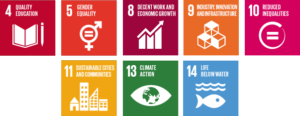Ocean Acidification
Understanding all Changing Ocean Conditions
Ocean Science Equity Initiative
Providing the Right Monitoring Tools
Our Equipment
What is Ocean Acidification?
Across the globe, seawater chemistry is changing faster than at any time in Earth’s history.
On average, seawater is 30% more acidic than it was 250 years ago. And while this change in chemistry — known as ocean acidification — may be invisible, its effects are not.
As increased carbon dioxide emissions dissolve into the ocean, its chemical makeup is altered, acidifying the seawater. This can stress out organisms in the ocean and reduce the availability of certain building blocks — making it harder for calcium carbonate-forming creatures like oysters, lobsters, and corals to build the strong shells or skeletons they need to survive. It makes some fish confused, and as animals compensate to maintain their internal chemistry in the face of these external changes, they don’t have the energy they need to grow, reproduce, acquire food, fend off disease, and carry out usual behaviors.
Ocean acidification can create a domino effect: It can disrupt whole ecosystems that have complex interactions between algae and plankton — the building blocks of food webs – and culturally, economically, and ecologically important animals like fish, corals, and sea urchins. While the susceptibility to this change in ocean chemistry can vary among species and populations, disrupted linkages can reduce overall ecosystem function and create future scenarios that are difficult to predict and study. And it’s only getting worse.
Solutions that Move the Needle
We must reduce the amount of anthropogenic carbon emissions entering the atmosphere from fossil fuels. We need to strengthen the connection between ocean acidification and climate change through international attention and legal governance frameworks, so these issues are seen as related issues and not separate challenges. And, we need to sustainably fund and maintain scientific monitoring networks and the creation of databases for both the near and long term.
Ocean acidification requires public, private, and non-profit organizations both in and outside of the ocean community to come together — and advance solutions that move the needle.
Since 2003, we’ve been fostering innovation and developing strategic partnerships, to support scientists, policymakers, and communities around the world. This work has been governed by a three-pronged strategy:
- Monitor and Analyze: Building the Science
- Engage: Strengthening and Growing our Network
- Act: Developing Policy
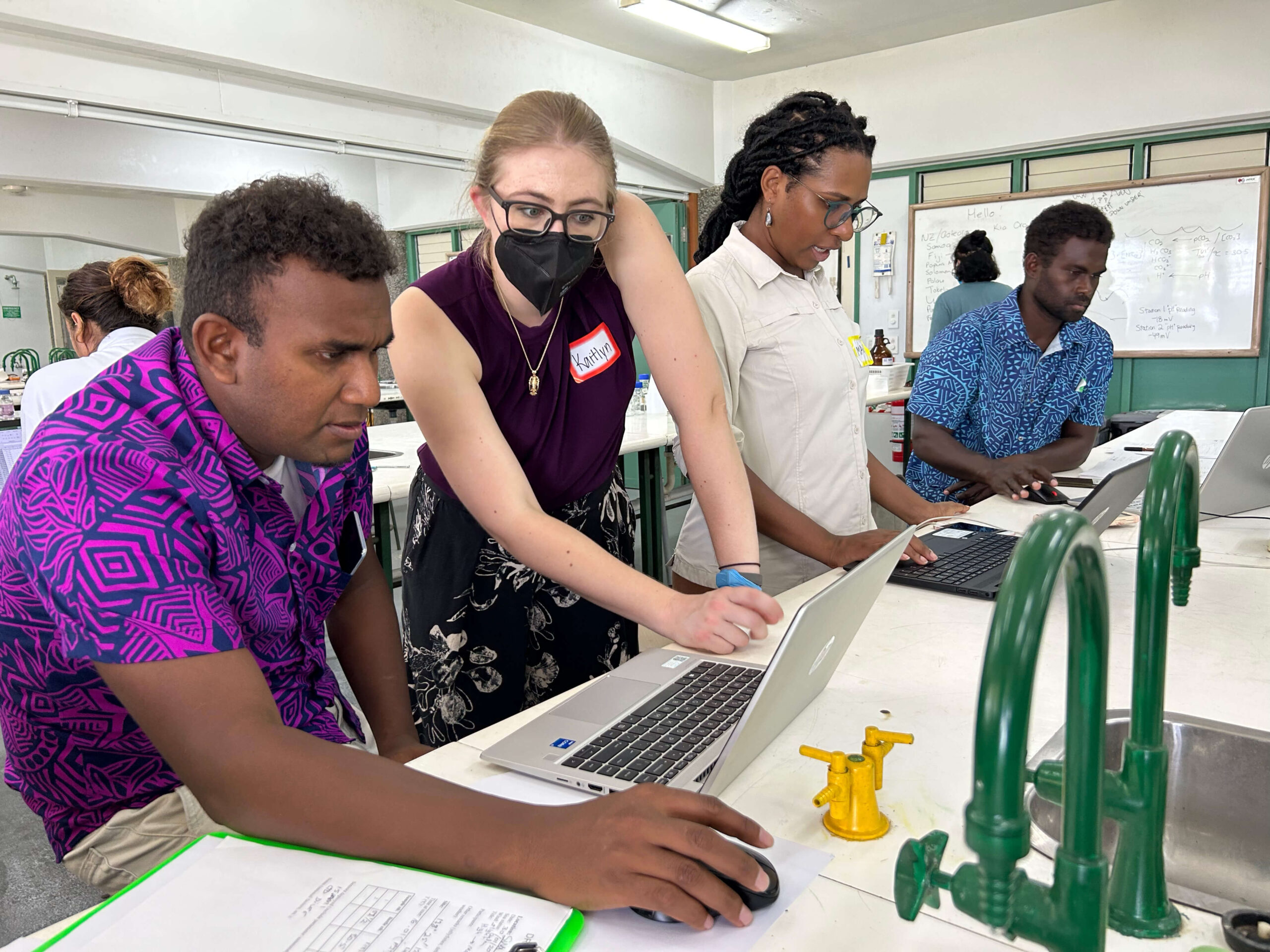
Monitor and Analyze: Building the Science
Observing how, where, and how quickly change is occurring, and studying effects of ocean chemistry on natural and human communities.
To respond to the changing chemistry of the ocean, we need to know what’s going on. This scientific monitoring and research needs to happen globally, in all coastal communities.
Equipping Scientists
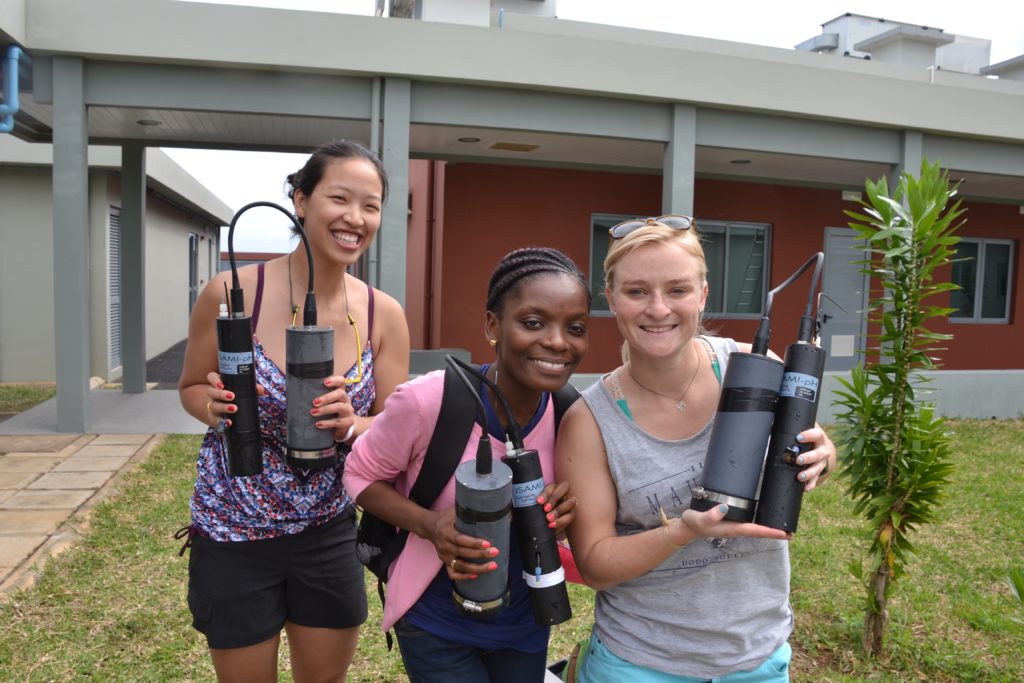
GOA-ON in a Box
Ocean acidification science should be practical, affordable and accessible. To support the Global Ocean Acidification – Observing Network, we translated complicated lab and field equipment into a customizable, low-cost kit — GOA-ON in a Box — to collect high quality ocean acidification measurements. The kit, which we have shipped throughout the world to remote coastal communities, has been distributed to scientists in 17 countries in Africa, the Pacific Islands, and Latin America.
pCO2 to Go
We partnered with Professor Burke Hales to create a low cost and portable chemistry sensor called the “pCO2 to Go”. This sensor measures how much CO2 is dissolved in seawater (pCO2) so that staff in shellfish hatcheries can learn what their young shellfish are experiencing in real time and take action if needed. At the Alutiiq Pride Marine Institute, a marine research facility in Seward, Alaska, the pCO2 to Go was put through its paces in both the hatchery and field – to get ready to scale deployment to vulnerable shellfish farmers in new regions.

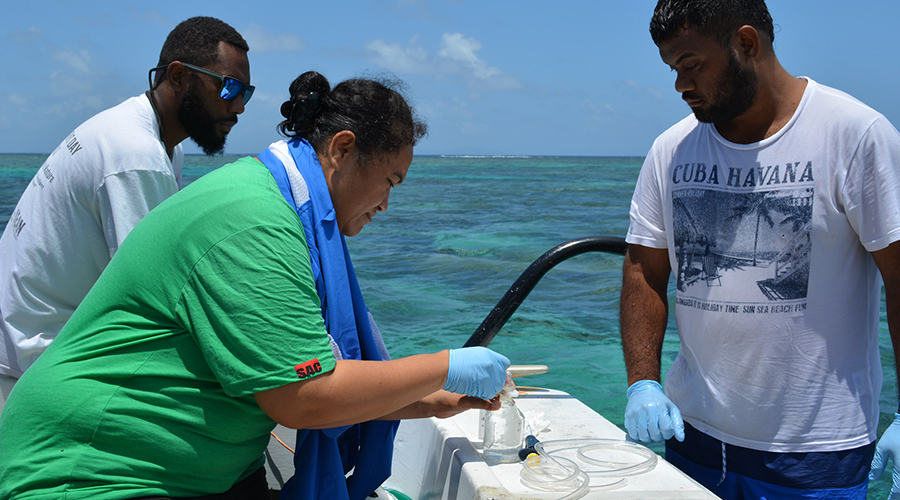
Pier2Peer Mentorship Program
We also partner with GOA-ON to support a scientific mentorship program, known as Pier2Peer, by awarding grants to mentor and mentee pairs – supporting tangible gains in technical capacity, cooperation, and knowledge. To date, more than 25 pairs have been awarded scholarships that support equipment purchases, travel for knowledge exchanges, and sample processing expenses.
Reducing Vulnerability
Because ocean acidification is so complex, and its effects are so far reaching, it can be difficult to understand exactly how it’s going to affect coastal communities. Nearshore monitoring and biological experiments help us answer important questions about how species and ecosystems might fare. But, to understand the effects on human communities, social science is required.
With support from NOAA, TOF is designing a framework for an ocean acidification vulnerability assessment in Puerto Rico, with partners at the University of Hawai’i and Puerto Rico Sea Grant. The assessment involves understanding the natural science — what monitoring and experimental data can tell us about the future of Puerto Rico — but also social science. Are communities already seeing changes? How do they feel their jobs and communities are being and will be affected? In conducting this assessment, we created a model that could be replicated in other data-limited area, and we hired local students to help us implement our research. This is the first NOAA Ocean Acidification Program-funded regional vulnerability assessment to focus on a U.S. territory and will stand out as an example for future efforts while providing key information about an underrepresented region.
Engage: Strengthening and Growing our Network
Building partnerships and coalitions with stakeholders.
Beyond just reducing the cost of monitoring, we also work to enhance the capacity of researchers to lead locally designed monitoring programs, connect them to other practitioners, and facilitate the exchange of technical equipment and gear. As of April 2023, we have trained more than 150 researchers from more than 25 countries. As they gather a suite of data on a coastal area’s condition, we then connect them to resources to assist in getting that information uploaded into broader databases like the Sustainable Development Goal 14.3.1 portal, which compiles ocean acidification data from around the globe.
Building Capacity in Ocean Acidification Monitoring in the Gulf of Guinea (BIOTTA)
Ocean acidification is a global issue with local patterns and effects. Regional collaboration is key to understanding how ocean acidification is affecting ecosystems and species and to mounting a successful mitigation and adaptation plan. TOF is supporting regional collaboration in the Gulf of Guinea through the Building CapacIty in Ocean AcidificaTion MoniToring in the Gulf of GuineA (BIOTTA) project, which is led by Dr. Edem Mahu and active in Benin, Cameroon, Côte d’Ivoire, Ghana, and Nigeria. In partnership with focal points from each of the countries represented and a student coordinator at the University of Ghana, TOF has provided a roadmap for stakeholder engagement, resource assessment, and regional monitoring and data production. TOF is also working to ship monitoring equipment to BIOTTA partners and coordinate in person and remote training.
Centering the Pacific Islands as a hub for OA Research
TOF has provided GOA-ON in a Box kits to various countries in the Pacific Islands. And, in partnership with the National Oceanic and Atmospheric Administration, we selected and supported a new regional ocean acidification training center, the Pacific Islands Ocean Acidification Centre (PIOAC) in Suva, Fiji. This was a joint endeavor led by The Pacific Community (SPC), the University of the South Pacific (USP), the University of Otago, and the New Zealand National Institute of Water and Atmospheric Research (NIWA). The center is a gathering place for all in the region to receive OA science training, use specialized ocean chemistry monitoring equipment, pick up spare parts for kit equipment, and receive guidance on data quality control/assurance and equipment repair. In addition to helping gather the in-region expertise provided by personnel for carbonate chemistry, sensors, data management, and regional networks, we are also working to make sure PIOAC serves as a central location to travel for training with two dedicated GOA-ON in a Box kits and to pick up spare parts to reduce the time and expense in repairing any equipment.
Act: Developing Policy
Enacting legislation that supports science, mitigates ocean acidification, and helps communities adapt.
Real mitigation and adaptation to a changing ocean requires policy. Robust monitoring and research programs require national funding to be sustained. Specific mitigation and adaptation measures need to be coordinated at local, regional, and national scales. Though the ocean knows no borders, legal systems vary significantly, and therefore custom solutions need to be created.
At the regional level, we are coordinating with Caribbean governments that are Parties to the Cartagena Convention and have supported the development of monitoring and action plans in the Western Indian Ocean.
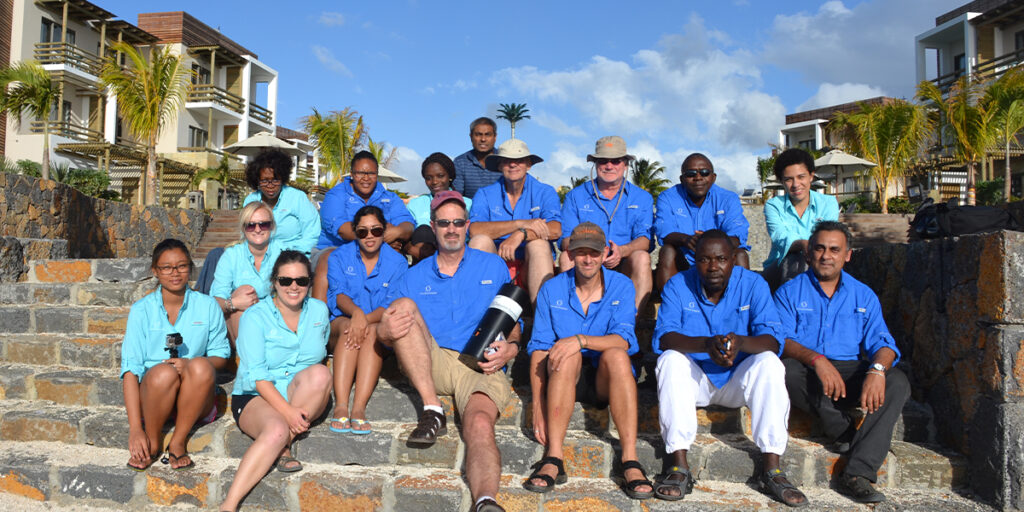
At the national level, using our legislative guidebook, we have trained legislators in Mexico on the importance of ocean acidification and continue to provide advice for ongoing policy discussions in a country with significant coastal and ocean wildlife and habitats. We have partnered with the Government of Peru to help advance national level action to understand and respond to ocean acidification.
At the subnational level, we are working with legislators on the development and passage of new laws to support ocean acidification planning and adaptation.
We help to build the science, policy, and technical capacity of practitioners leading ocean acidification initiatives worldwide and in their home countries.
We create practical tools and resources designed to work all around the world — including North America, Pacific Islands, Africa, Latin America, and the Caribbean. We do this through:
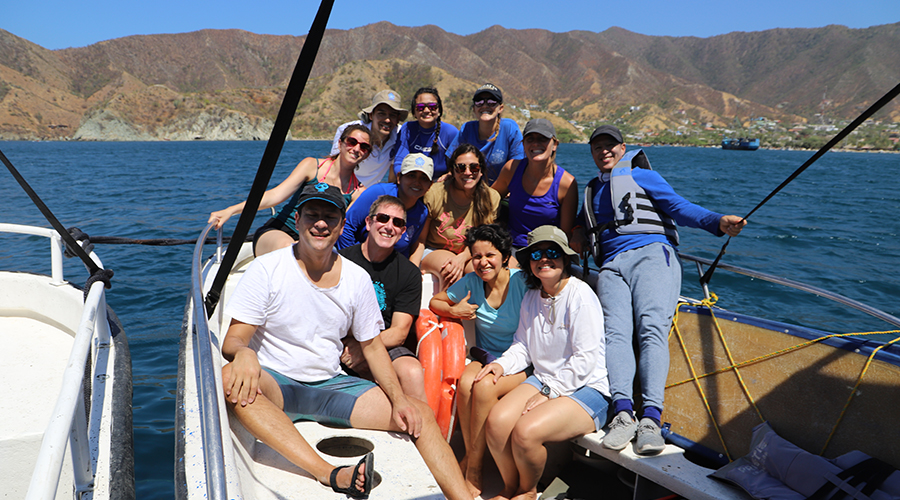
Connecting local communities and R&D experts to design affordable, open-source technological innovations and facilitating the exchange of technical equipment and gear.
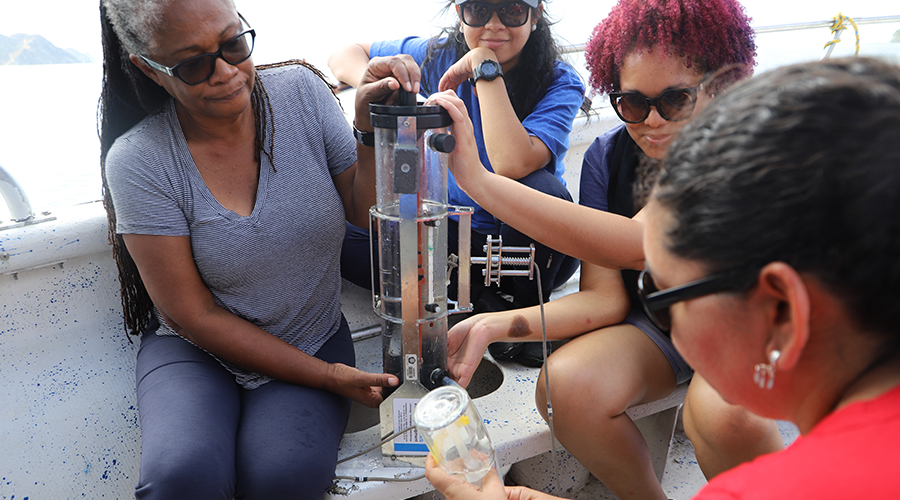
Holding trainings around the world and providing long-term support through equipment, stipends, and ongoing mentoring.
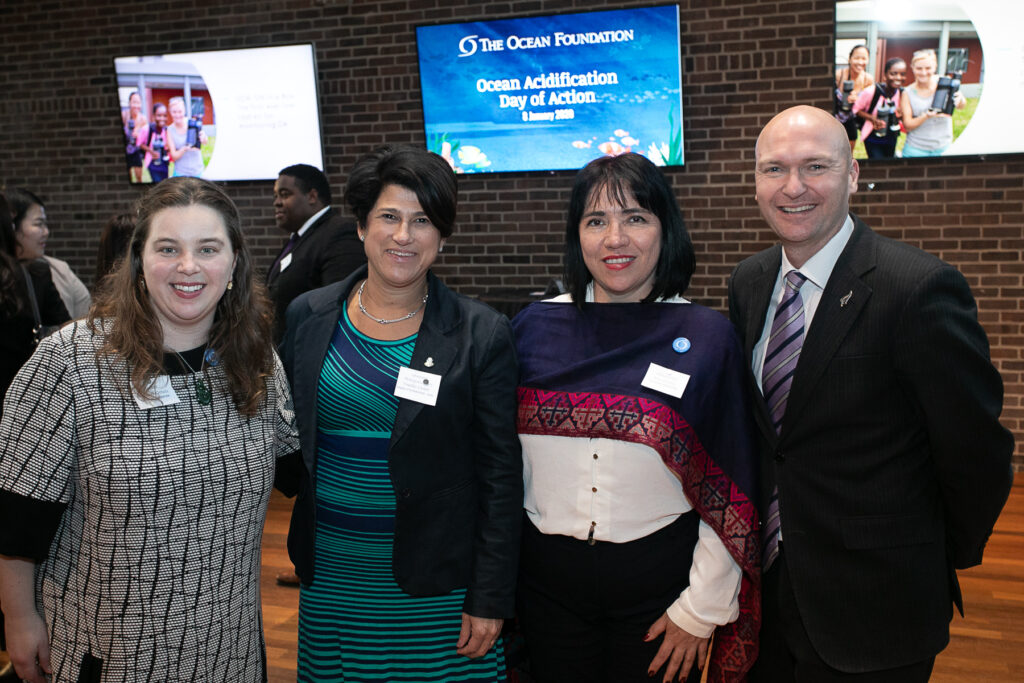
Leading advocacy efforts on ocean acidification policies at the national and sub-national level and helping governments seek resolutions at the international and regional levels.
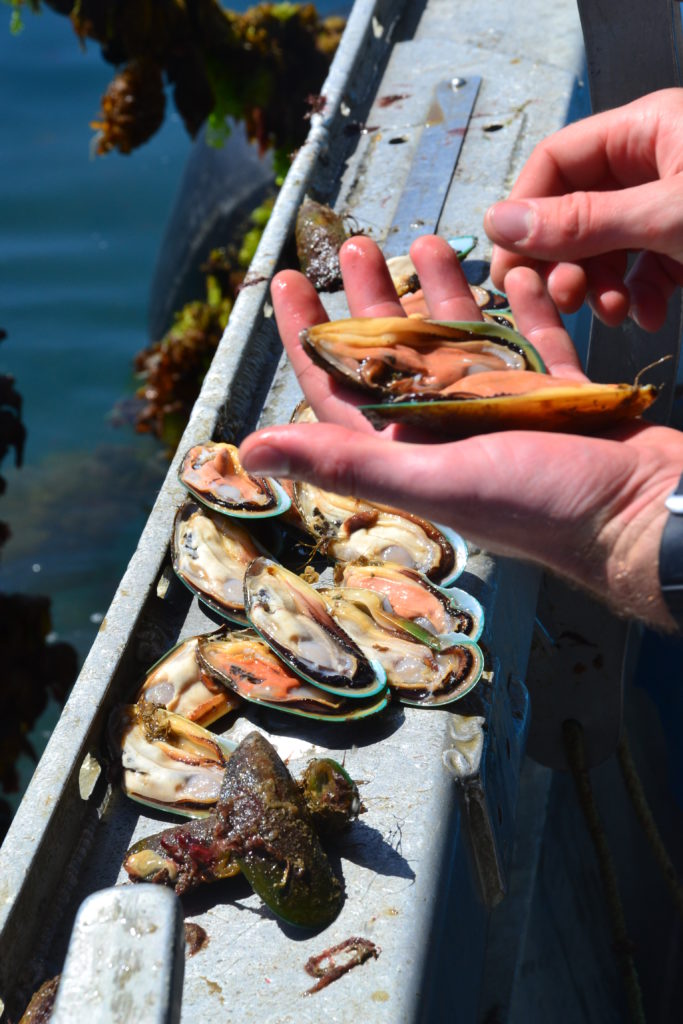
Demonstrating return on investment for innovative, simplified, affordable shellfish hatchery resilience technology to address changing ocean conditions.
Despite the considerable threat that it poses to our planet, there are still significant gaps in our granular understanding of the science and results of ocean acidification. The only way to truly stop it is to halt all CO2 emissions. But, if we understand what is happening regionally, we can design management, mitigation, and adaptation plans that protect important communities, ecosystems, and species.
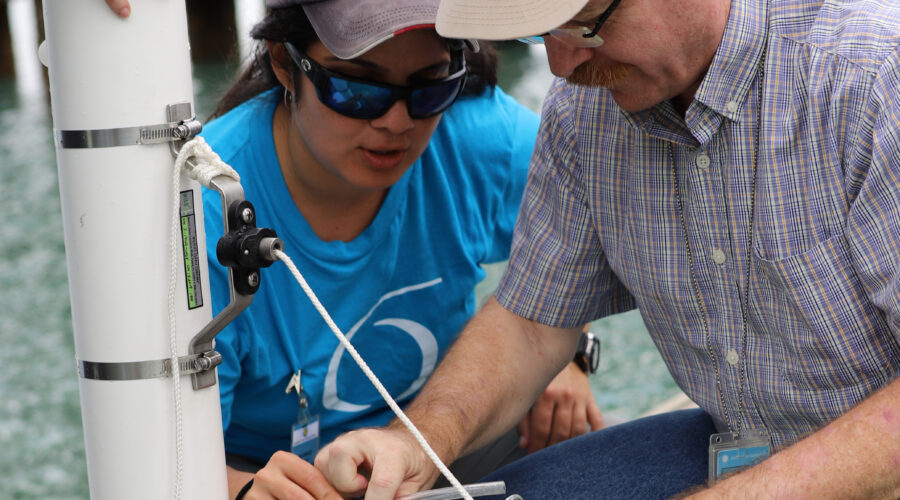
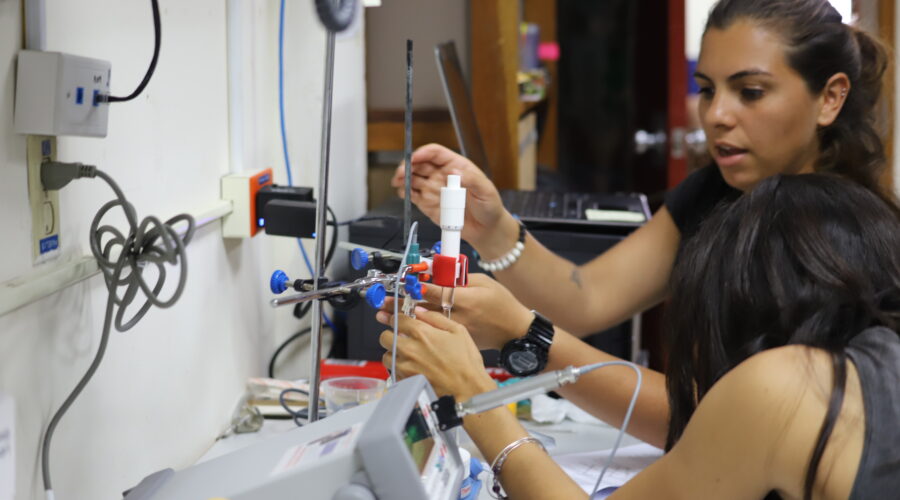
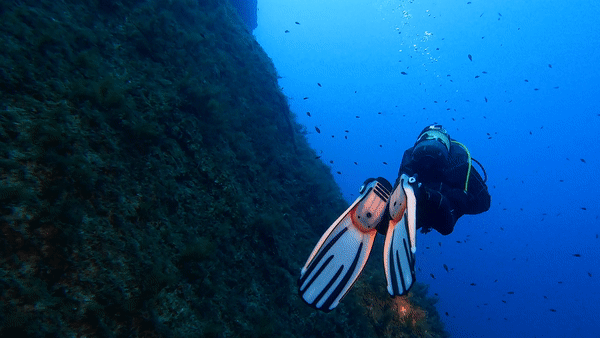
Ocean Acidification Day of Action
RESEARCH
MORE LINKS
Ocean Science Equity Initiative | Capacity Building | Ocean Science Diplomacy
Equipping Scientists and Communities | Feature Collaboratives: West African Region
RELATED SUSTAINABLE DEVELOPMENT GOALS (SDGS)
